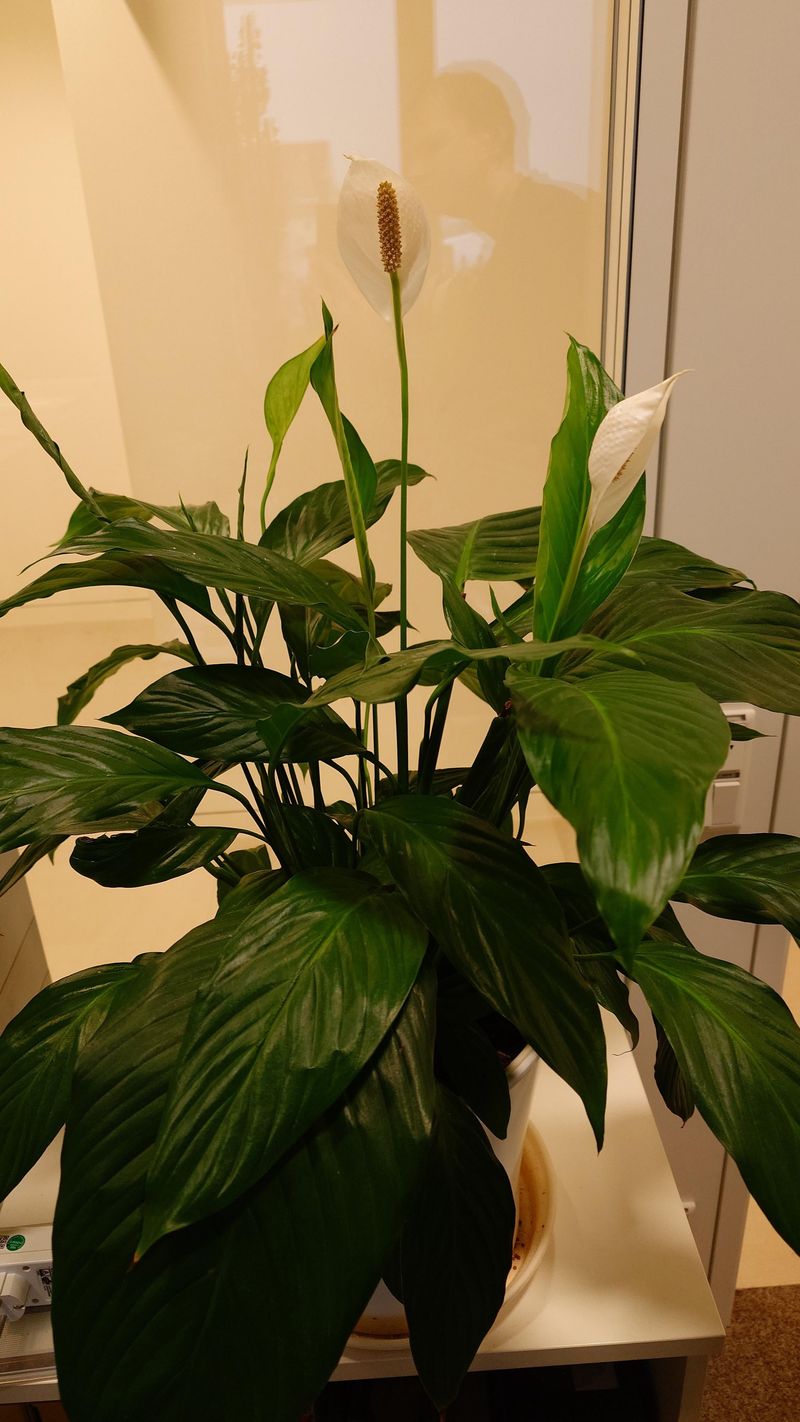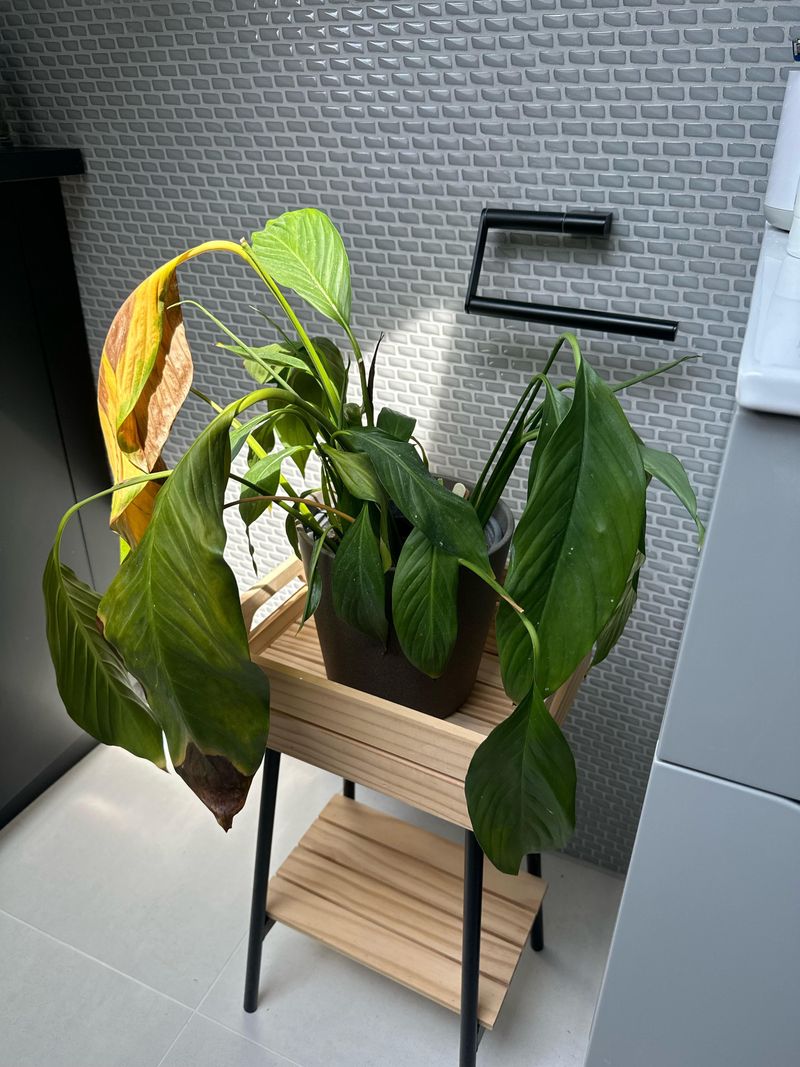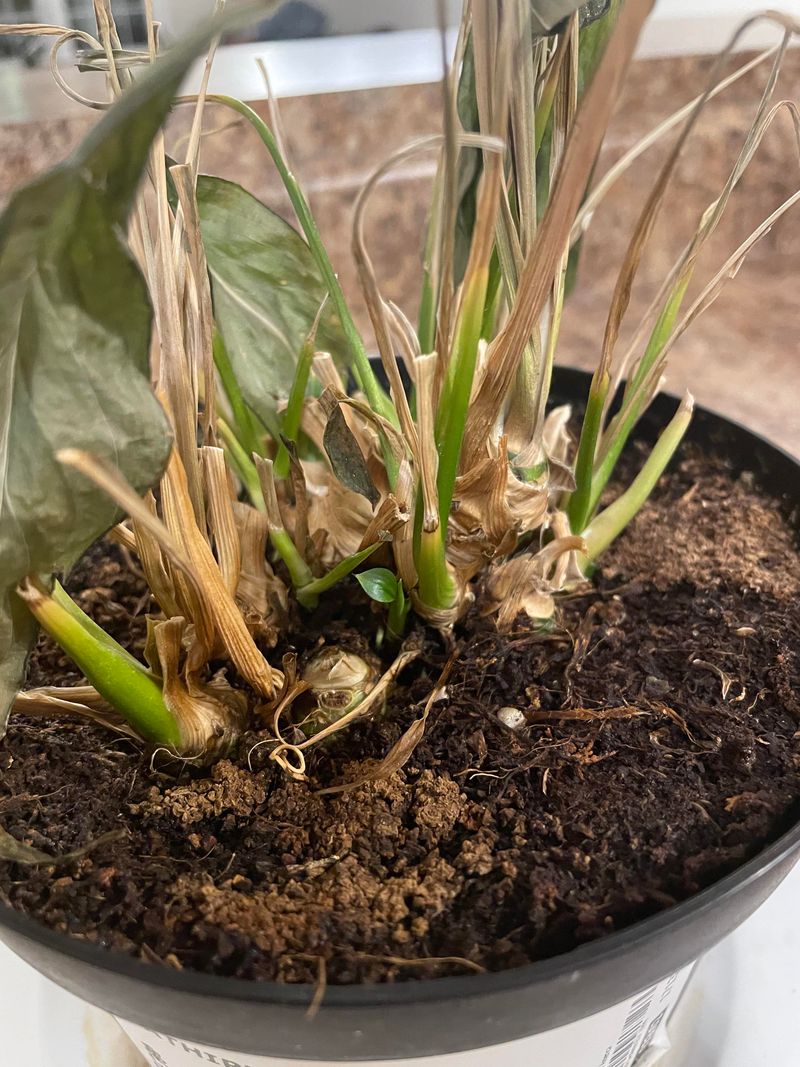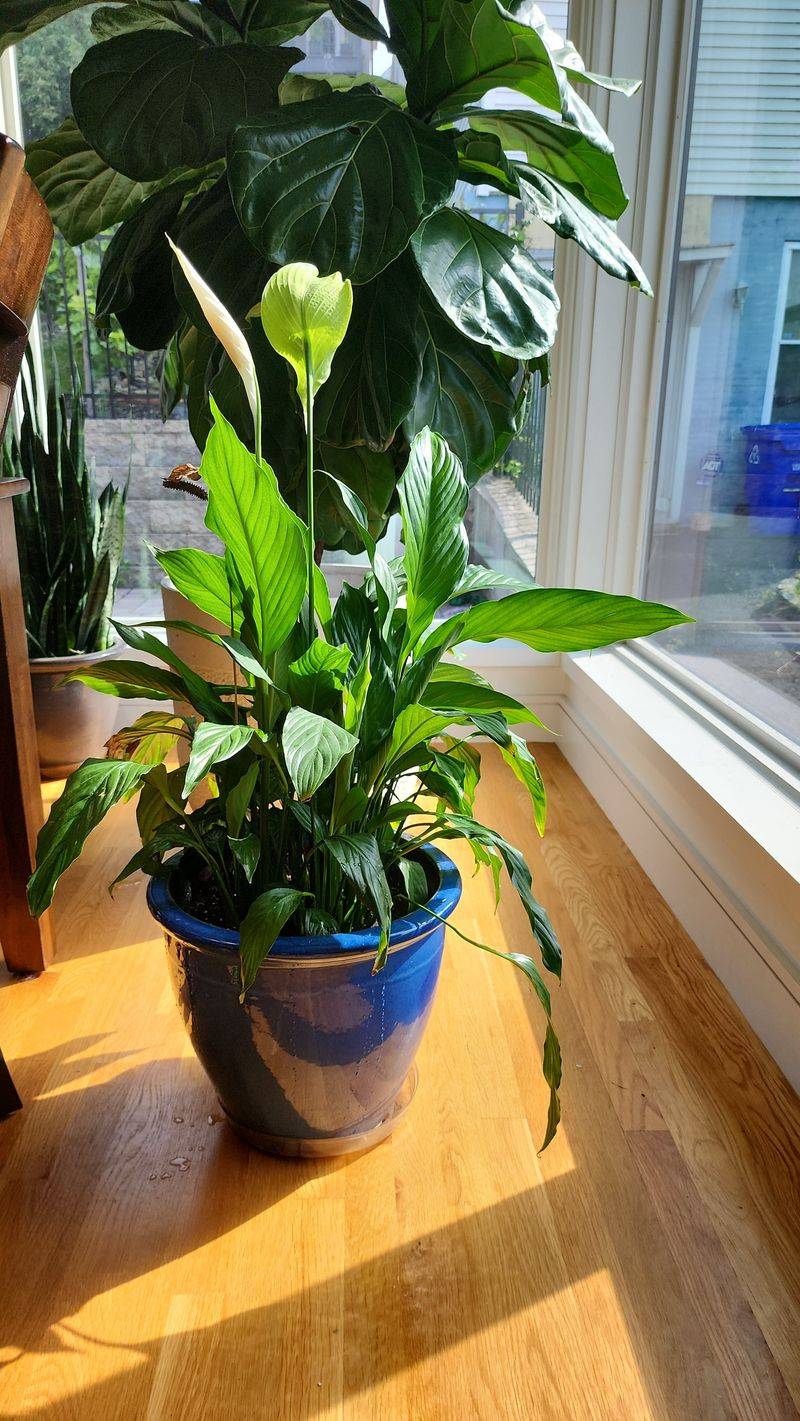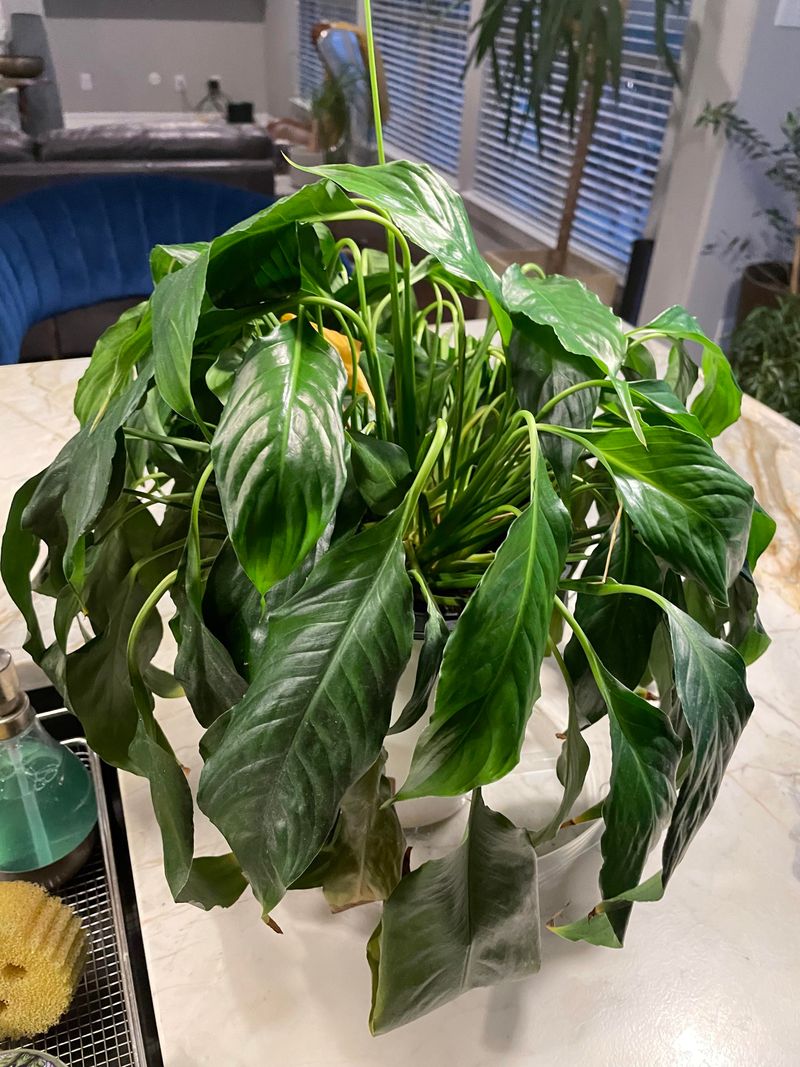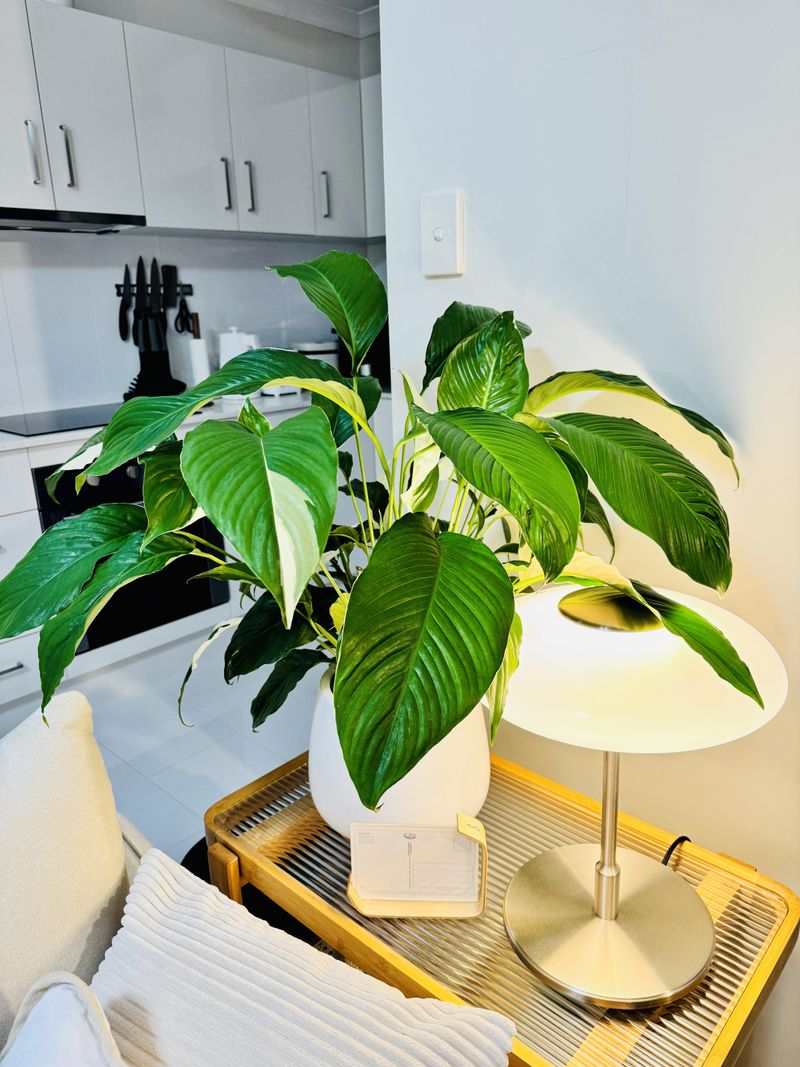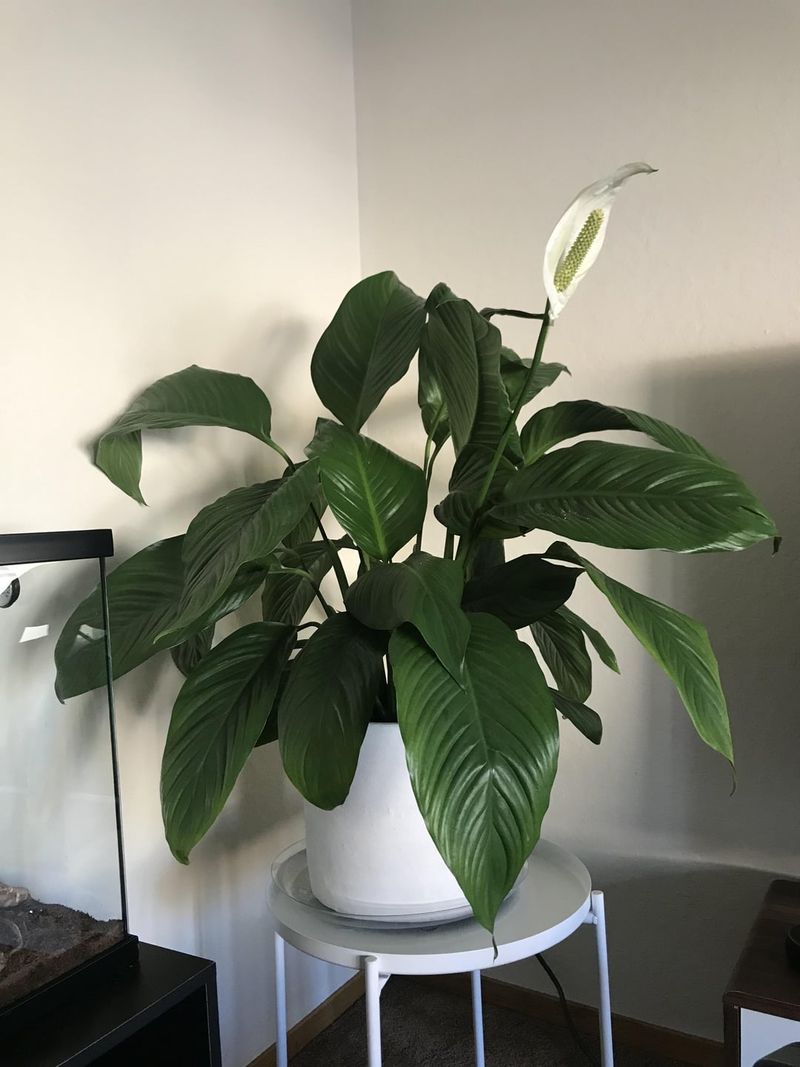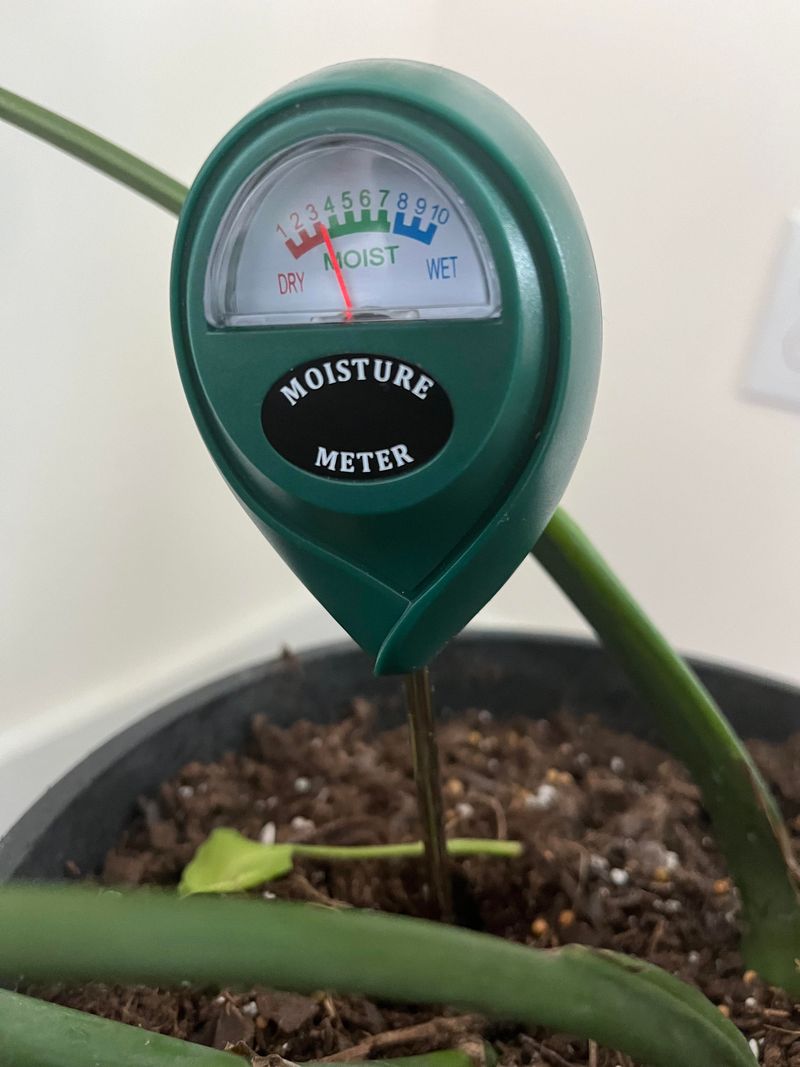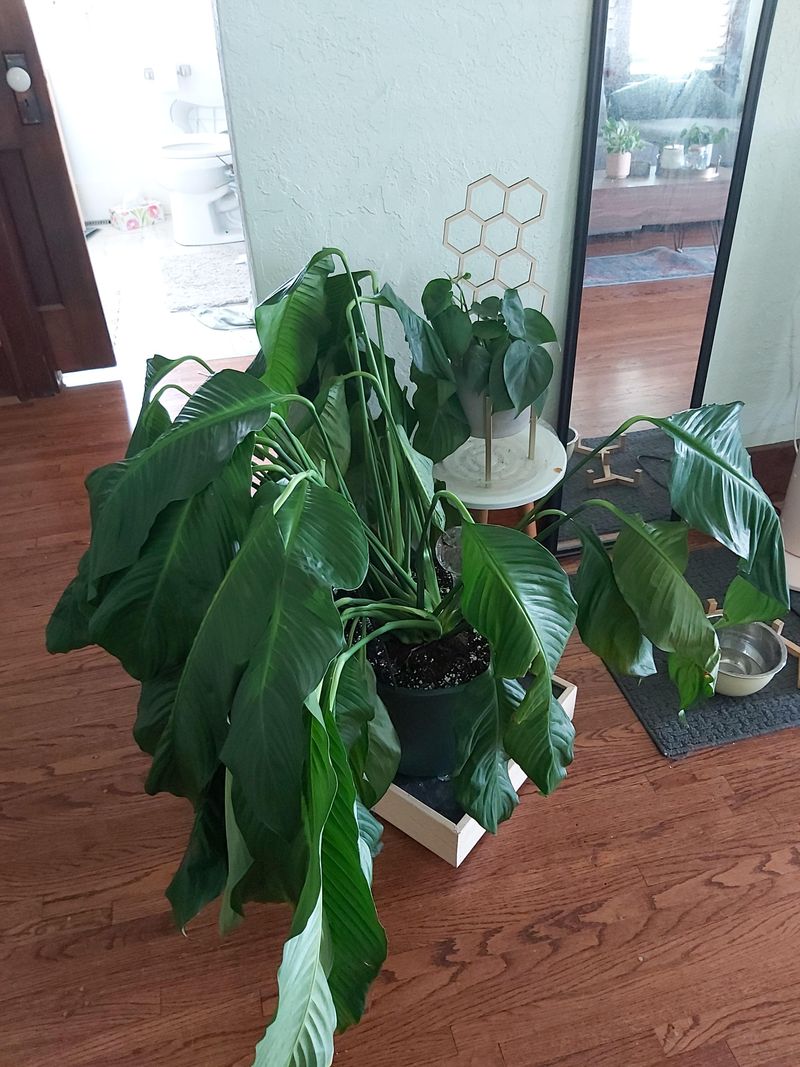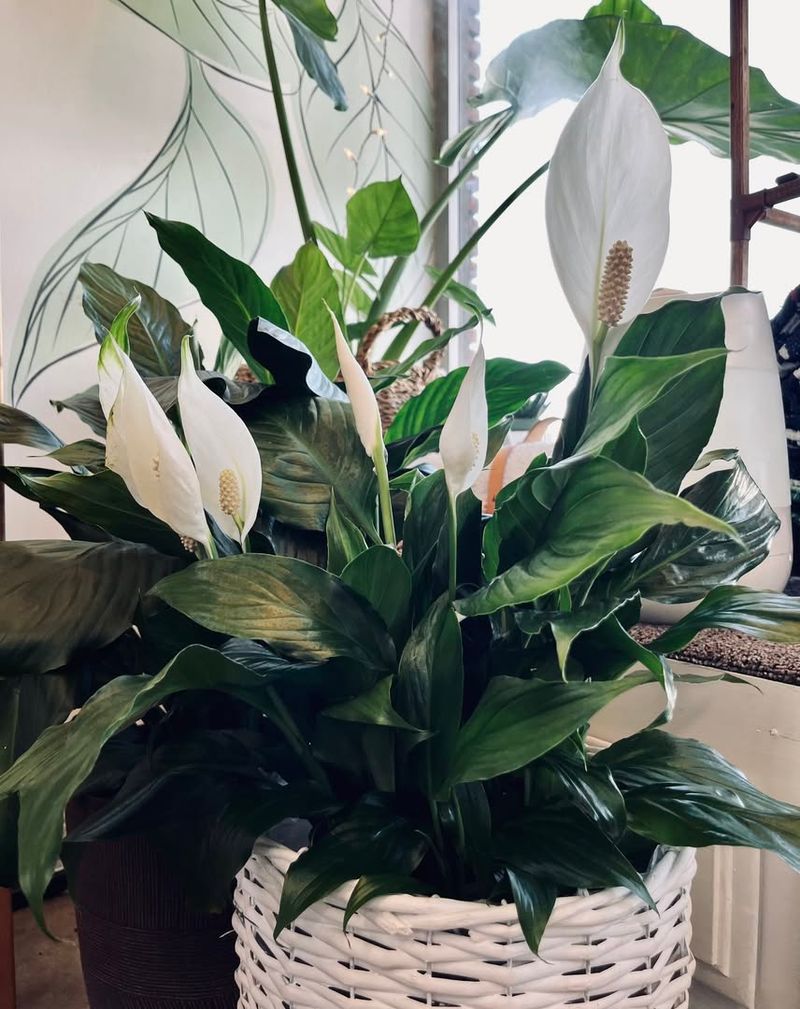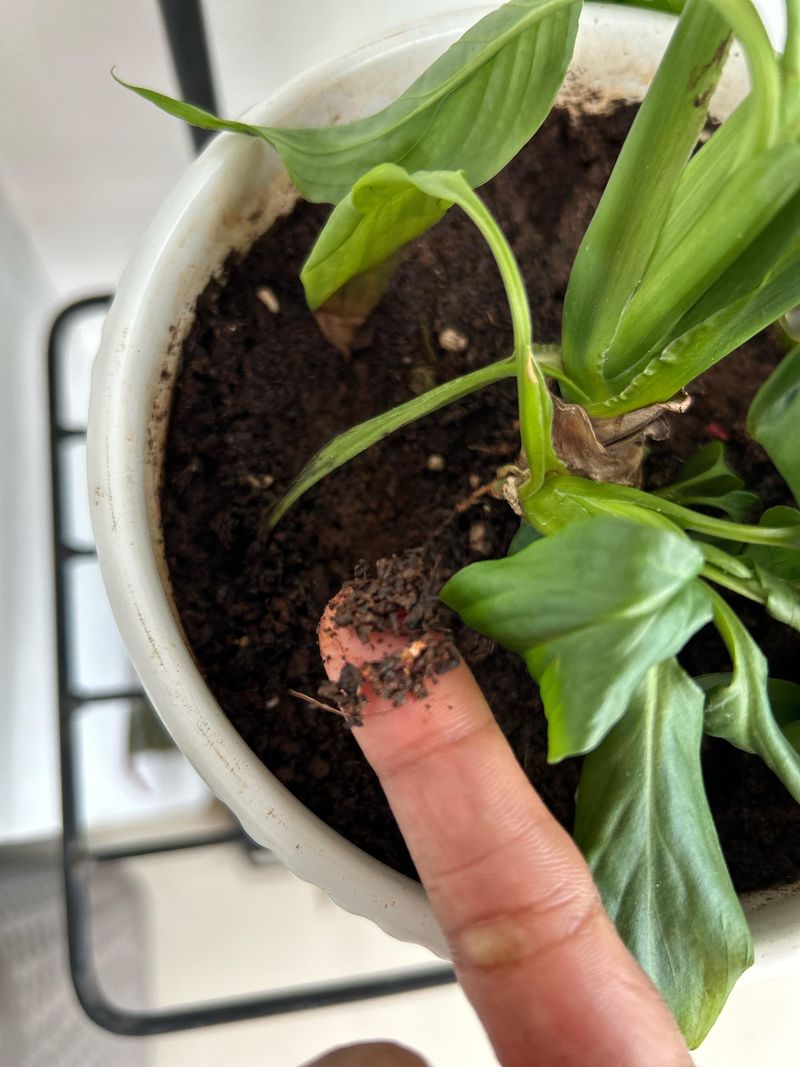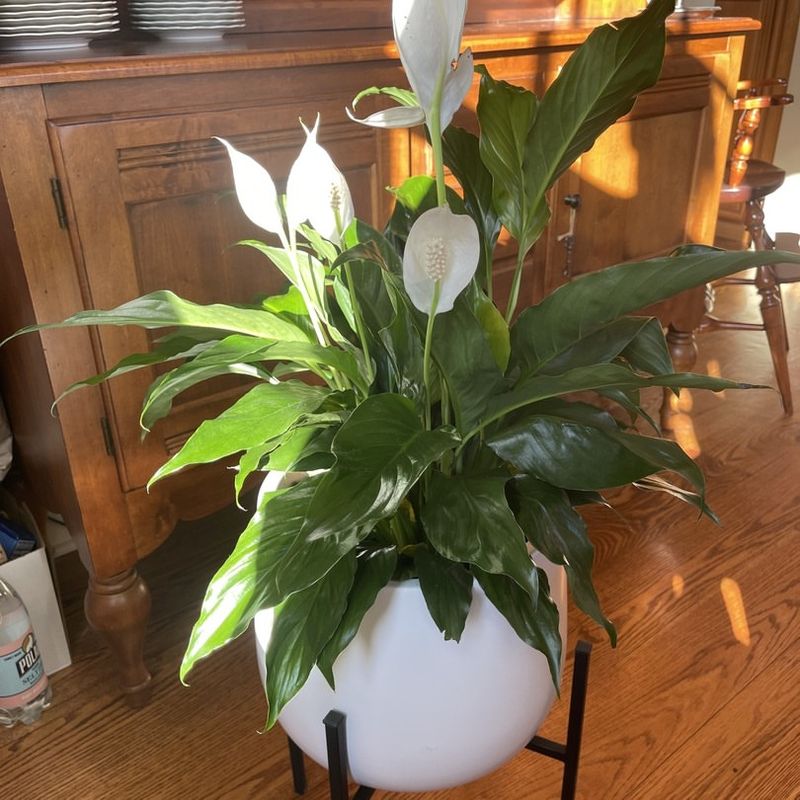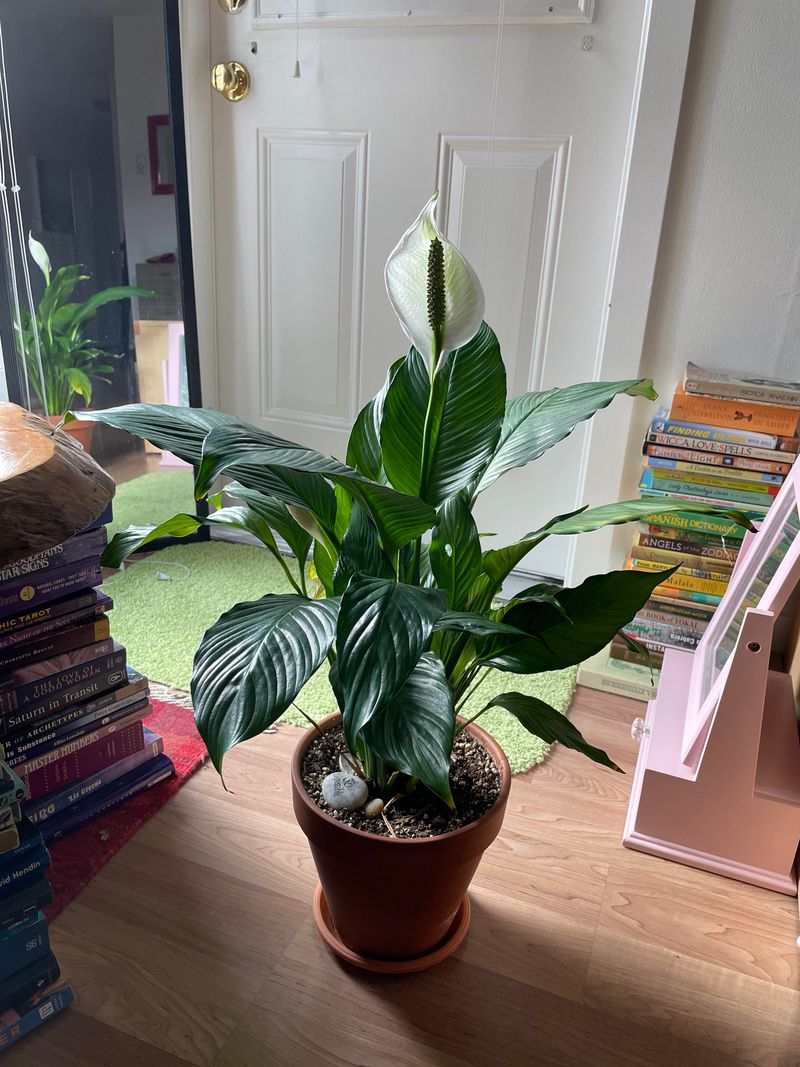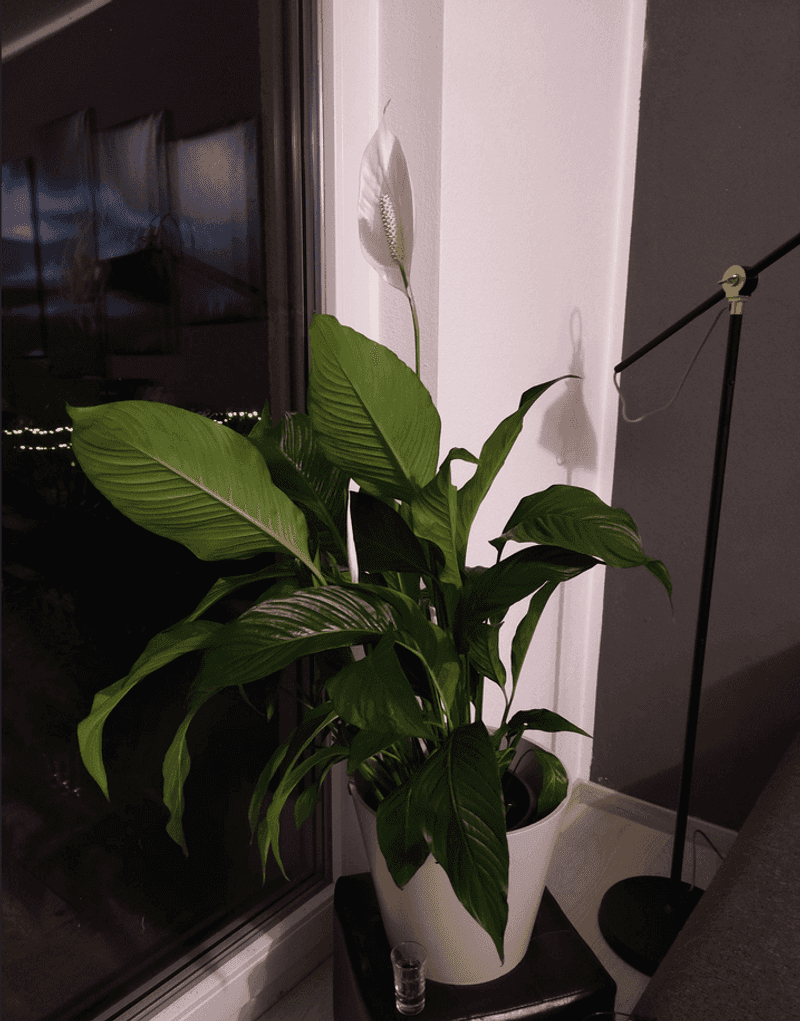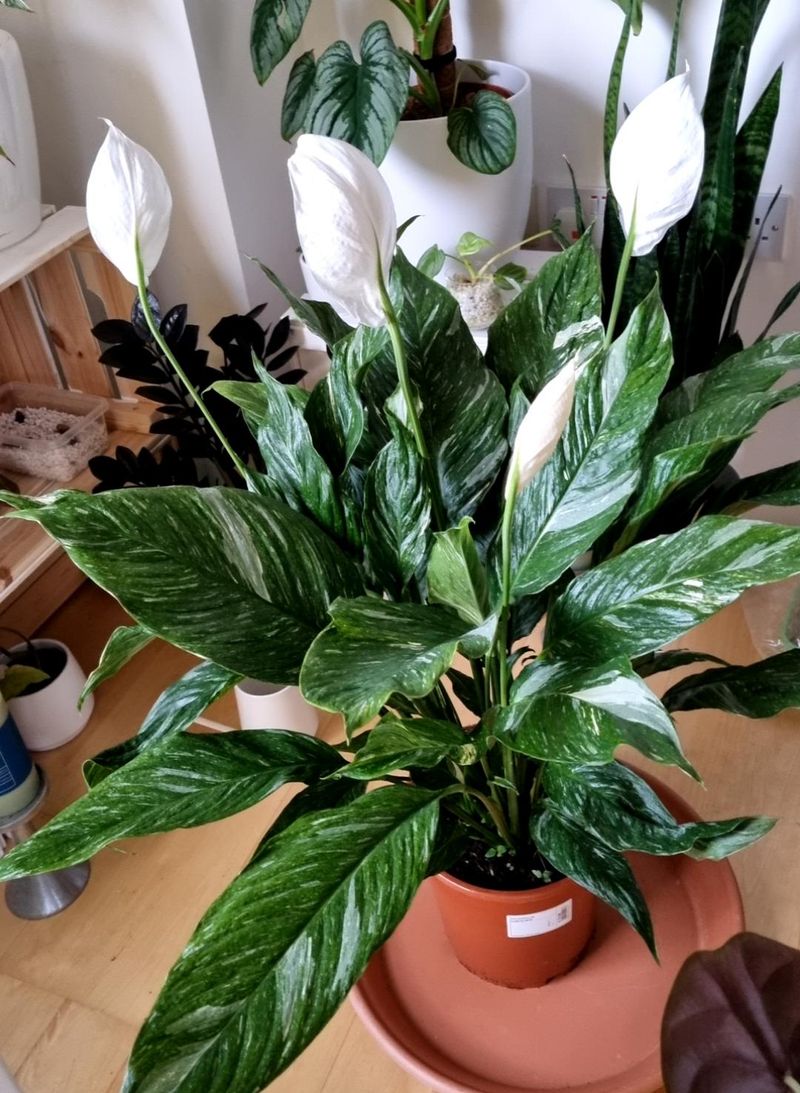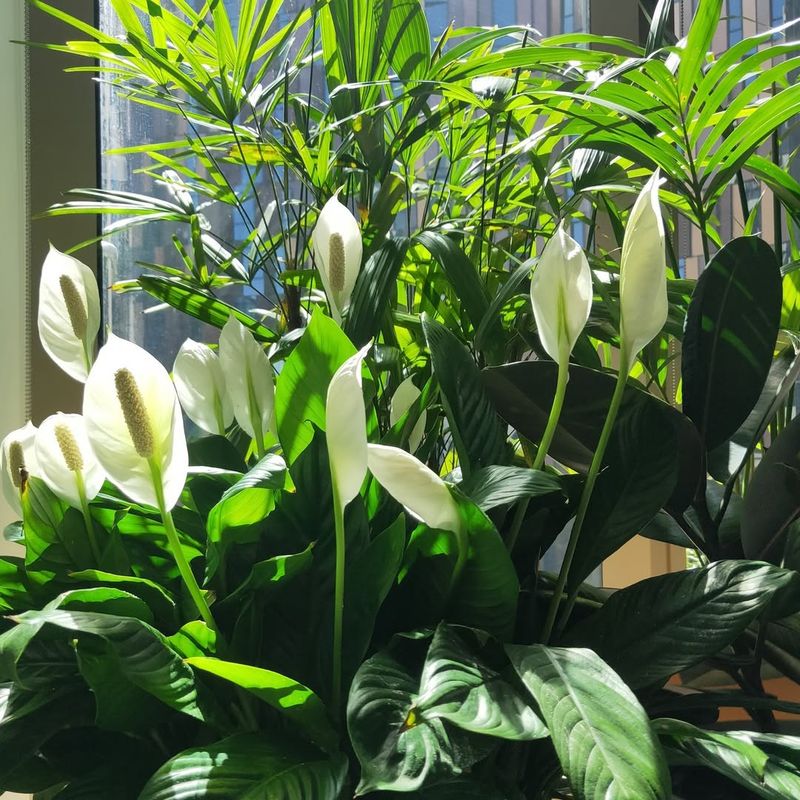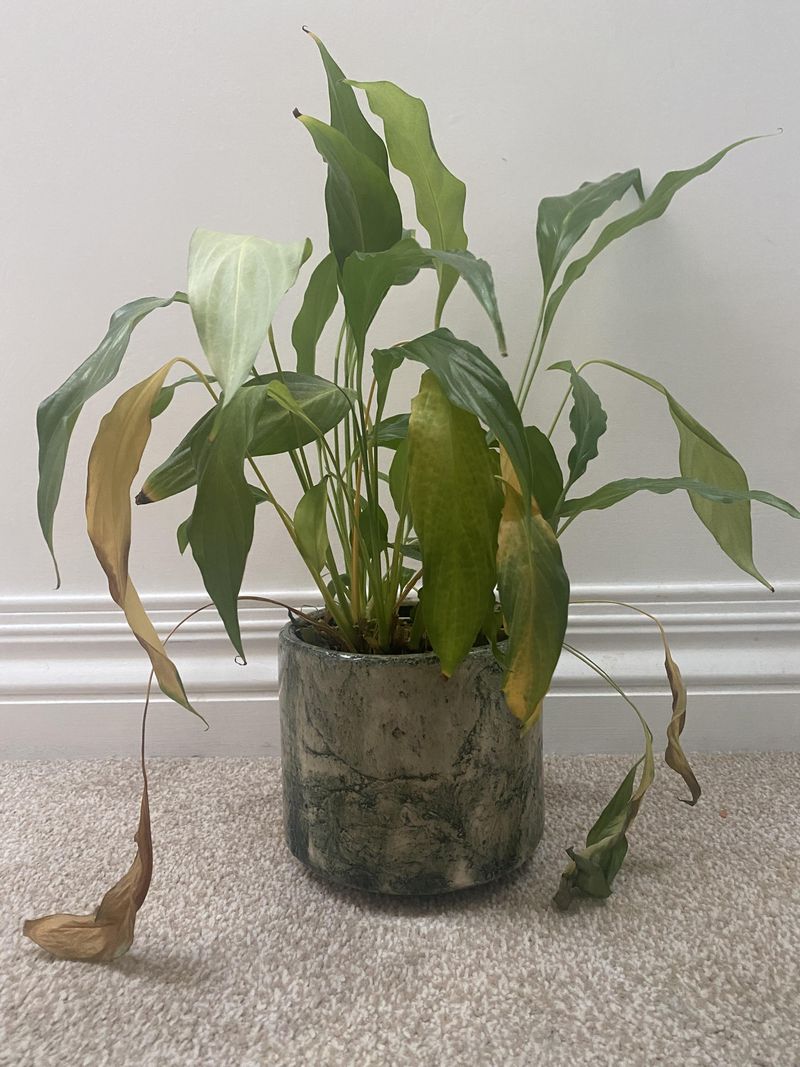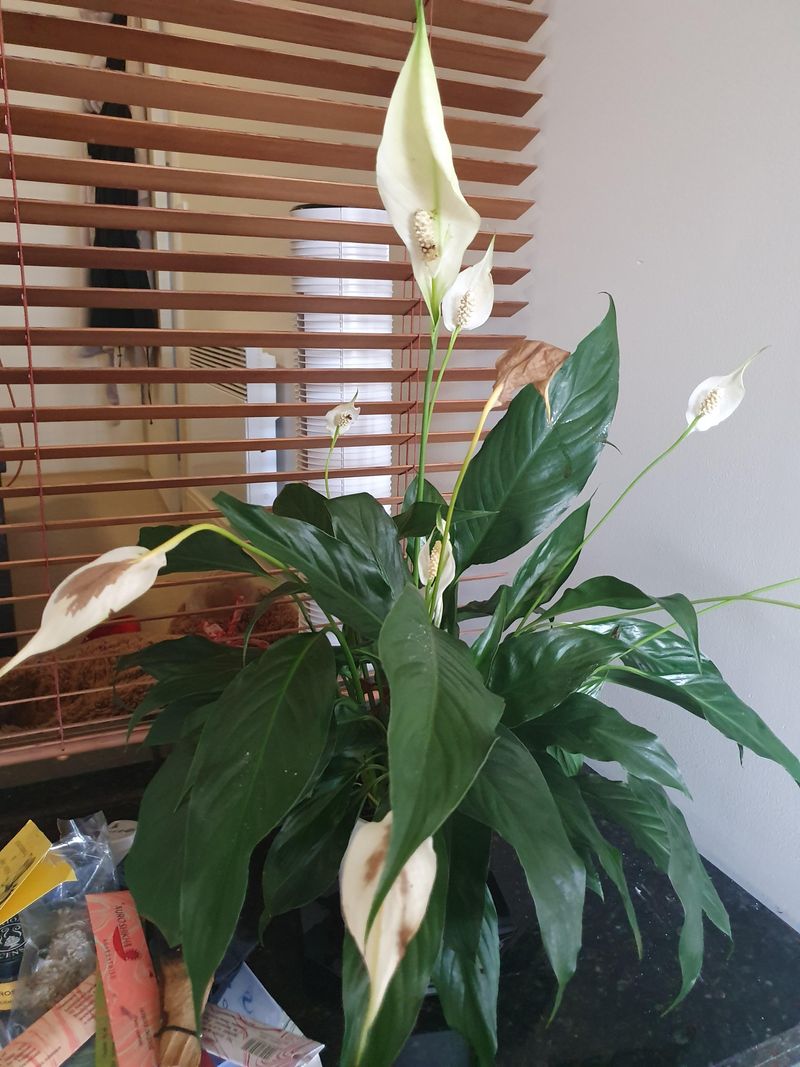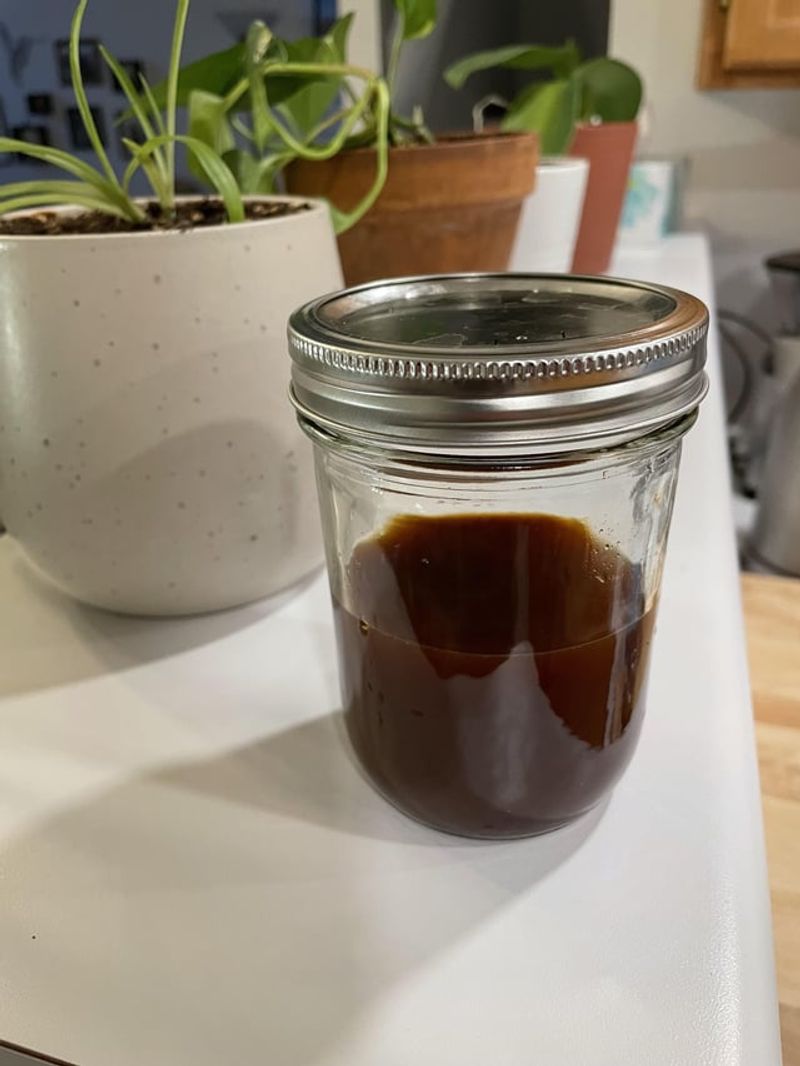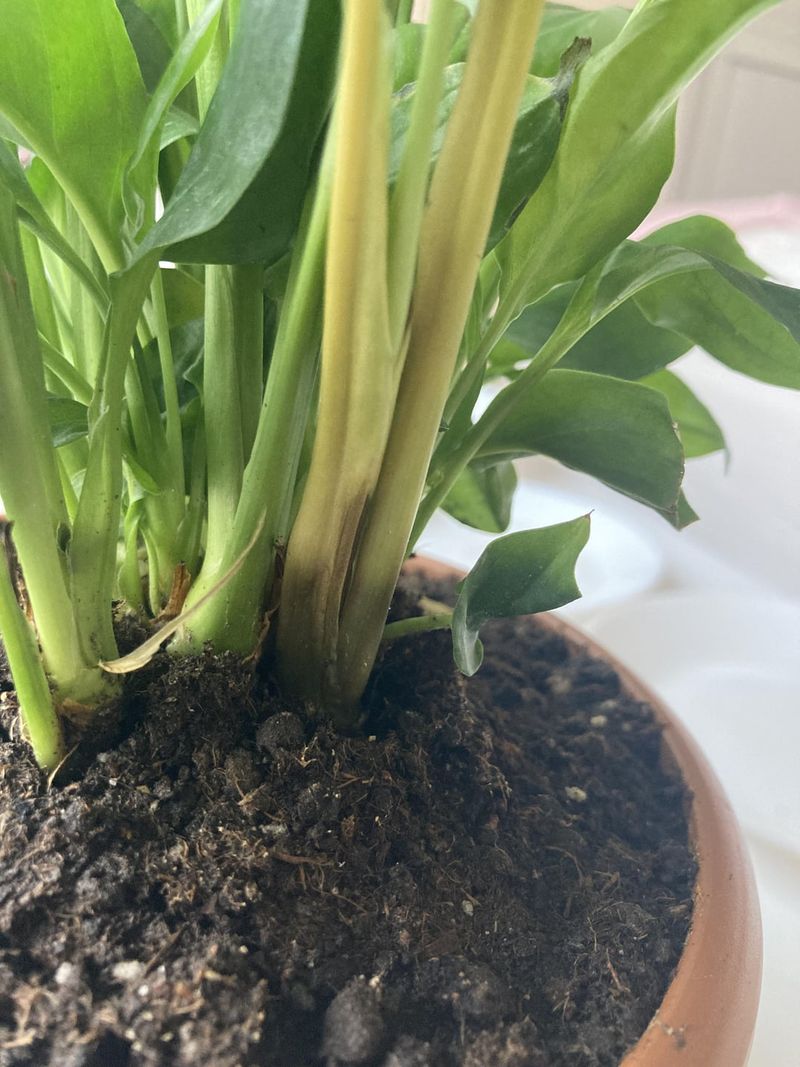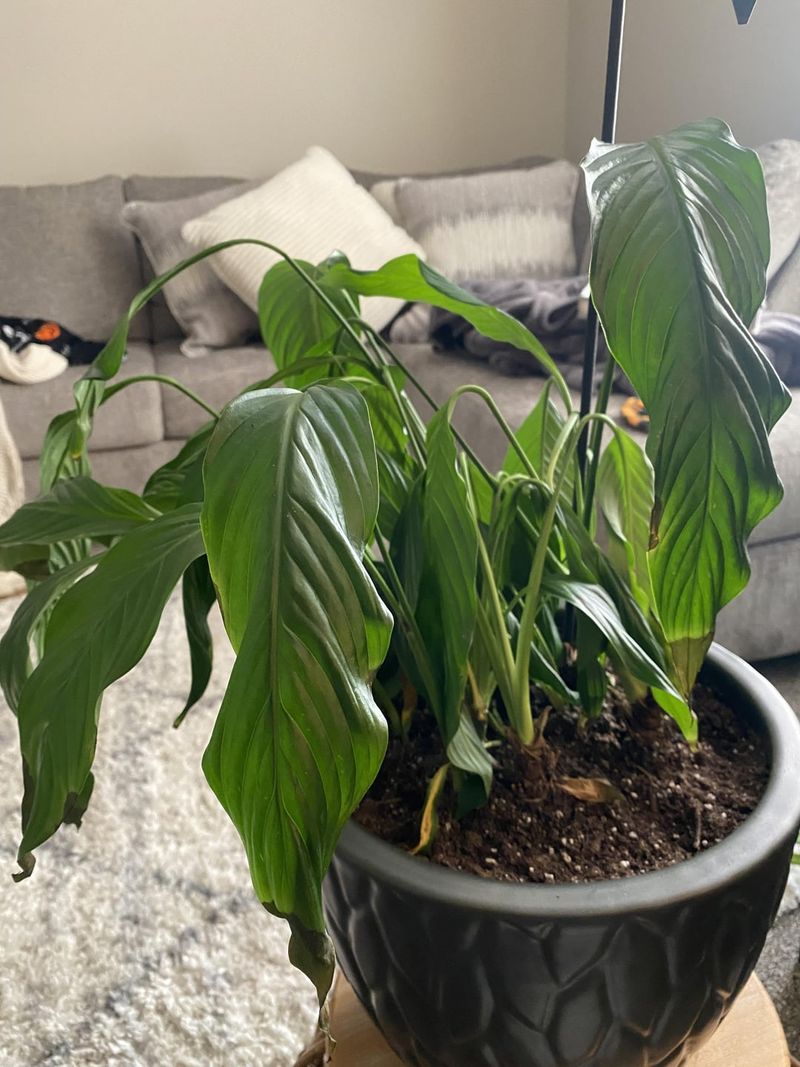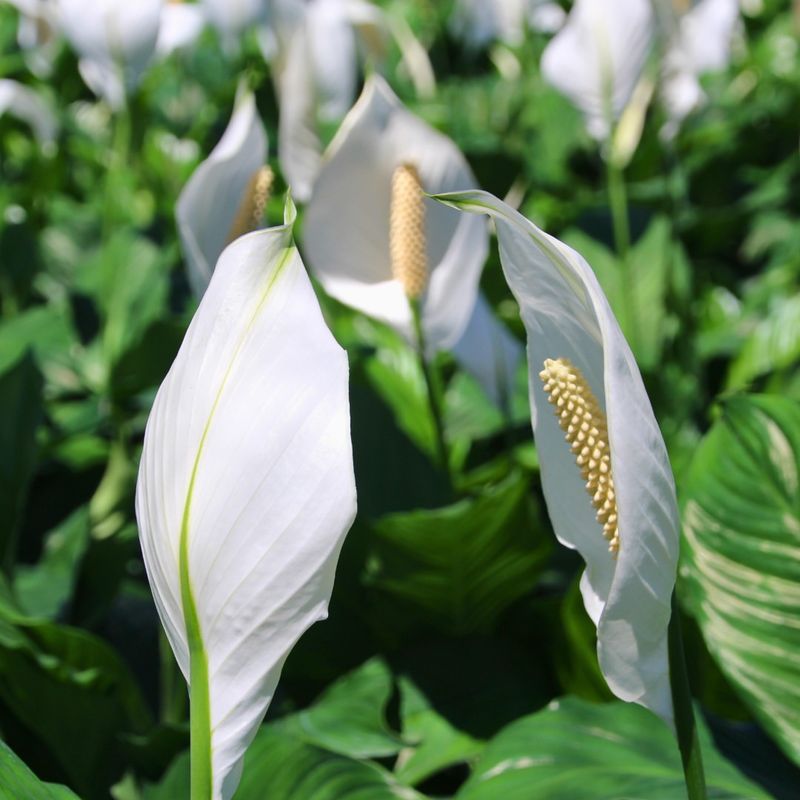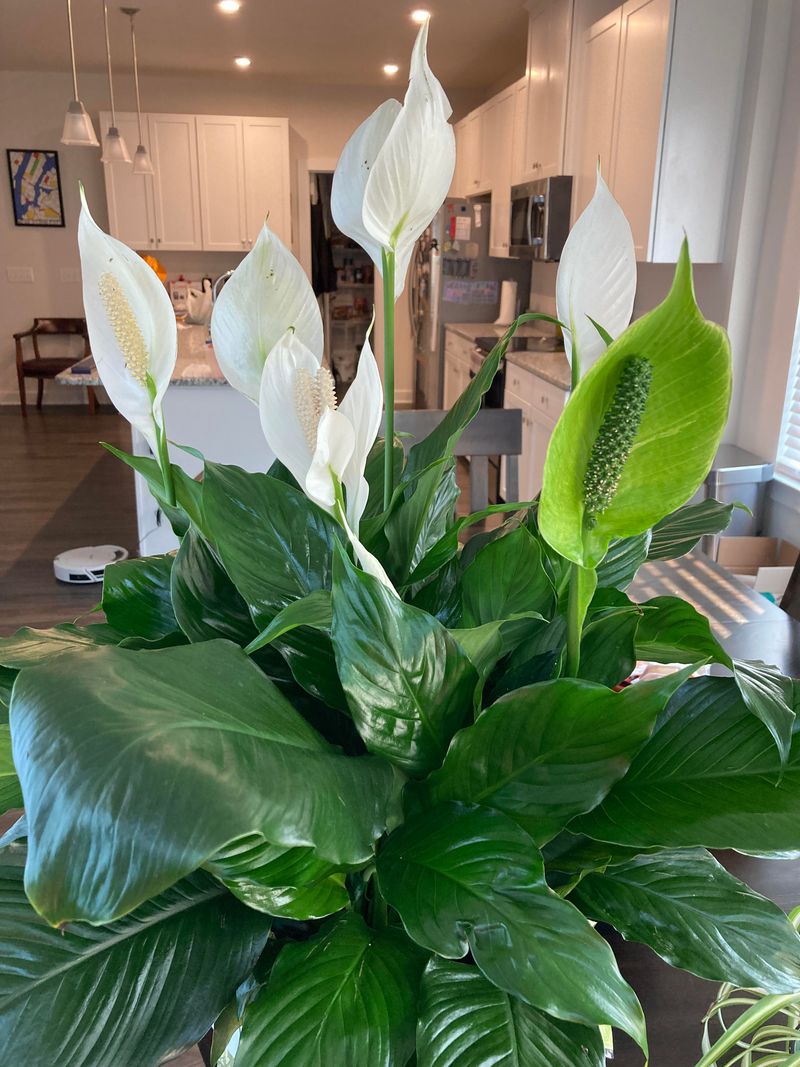Peace lilies are pretty low-maintenance, but a little extra care can go a long way in keeping them happy. The right fertilizer can mean the difference between a plant that just survives and one that thrives with gorgeous flowers.
I’ve put together 30 simple tips to help you feed your peace lily the right way. With these easy tricks, you’ll have lush green leaves and stunning white blooms in no time.
Get ready to give your plant the boost it deserves!
1. Use The Right Fertilizer For Your Peace Lily
Picking the perfect fertilizer is like choosing the right shoes—you need the one that fits! Opt for a balanced, water-soluble fertilizer with an NPK ratio like 20-20-20 for consistent growth and blooms.
This mix gives your Peace Lily the essential nutrients it craves to thrive in your home. Make sure to avoid fertilizers with too much nitrogen, as it could lead to lush leaves but fewer flowers.
When in doubt, go for a general-purpose plant food that covers all the bases!
2. Fertilize During The Growing Season
When your Peace Lily is waking up from its winter slumber, it’s time to show it some extra love with fertilizer! Spring and summer are the peak growing months, so this is when your plant needs all the nutrients it can get.
By feeding it during this time, you help encourage robust growth and healthy blooms. It’s like giving your Peace Lily a power boost right when it needs it most. However, don’t go overboard—moderation is key!
3. Keep Fertilizing Light In The Winter
Winter is a time for your Peace Lily to slow down a bit, and the last thing it needs is too much fertilizer. In fact, you can cut back or even stop fertilizing during the colder months.
Since it’s not actively growing as much, your Peace Lily can take a break. If you do want to feed it, a very diluted solution once a month will suffice. Think of it like a cozy winter nap for your plant!
4. Apply Fertilizer At The Right Time Of Day
Timing is everything! It’s best to apply fertilizer early in the morning or during the late afternoon when the plant isn’t stressed by the midday sun. This ensures that the fertilizer is absorbed without causing any harm to the leaves.
Fertilizing during hot parts of the day can lead to burnt spots or uneven absorption, so always choose a cooler part of the day. Your Peace Lily will thank you for it!
5. Dilute The Fertilizer For Best Results
Concentrated fertilizer is a no-go for Peace Lilies—your plant prefers a lighter touch. Mix your fertilizer at half the recommended strength, so you don’t overwhelm it.
Too much fertilizer can cause root burn, which means your plant might not look as happy as you hoped. A little goes a long way, and your Peace Lily will respond with beautiful blooms without any fuss. It’s like serving your plant a meal that’s just the right size!
6. Use Organic Fertilizers For A Natural Boost
If you’re into natural gardening, organic fertilizers are a fantastic option. Things like compost tea, fish emulsion, or seaweed-based fertilizers can provide your Peace Lily with the nutrients it needs without synthetic chemicals.
Not only will your plant thank you, but you’ll also be contributing to a more eco-friendly home. Organic options are slow-release, giving your Peace Lily nutrients gradually, which is perfect for steady growth.
7. Fertilize In Small Doses Over Time
More isn’t always better, especially when it comes to fertilizer. It’s much better to feed your Peace Lily in smaller, more frequent doses than one big dose all at once. This helps prevent nutrient overload and gives the plant time to absorb what it needs.
By fertilizing over time, your Peace Lily will stay strong and steady. Plus, it helps you avoid the stress of trying to fix any fertilizer mistakes!
8. Don’t Fertilize A Sick Peace Lily
Before you grab that fertilizer bottle, make sure your Peace Lily is healthy! If it’s sick or stressed, adding more nutrients can make things worse.
Focus on nursing your plant back to health with water, light, and proper care before thinking about fertilizing. Once it’s back to its vibrant self, then you can start thinking about feeding. A healthy Peace Lily will always appreciate a good meal!
9. Check The Soil Moisture Before Fertilizing
You wouldn’t want to fertilize a dry plant, right? Always make sure the soil is slightly moist before applying fertilizer. If you fertilize dry soil, the fertilizer can burn the roots and leave your Peace Lily stressed out.
Water your plant first, and then give it the nutrients it needs. Think of it like feeding your plant after a refreshing drink!
10. Fertilize After Repotting
After giving your Peace Lily a new home in a fresh pot, wait a few weeks before fertilizing. The plant will be adjusting to its new environment, and it’s important to let it settle in first.
Once it’s comfortable, then you can start adding nutrients to encourage growth. Fertilizing too soon can overwhelm your Peace Lily. Give it some time to get used to the change, then feed it for the best results!
11. Watch For Signs Of Overfertilizing
Nobody likes too much of a good thing, not even your Peace Lily. If you notice yellowing leaves, brown tips, or stunted growth, it could be a sign that you’ve been overfertilizing.
Don’t panic, just flush the soil with water to remove any excess nutrients. Once the plant recovers, reduce the fertilizer dosage. It’s all about finding the perfect balance for your Peace Lily to flourish!
12. Use Slow-Release Fertilizers For Convenience
For a hassle-free feeding routine, slow-release fertilizers are your best friend. These fertilizers break down gradually, providing your Peace Lily with a steady supply of nutrients over time.
That means you don’t have to worry about fertilizing every few weeks. Just sprinkle some in the soil, and let it do its thing. It’s a convenient way to keep your plant happy without constant attention!
13. Avoid Fertilizing Right After Transplanting
Transplanting is a big deal for your Peace Lily, so it’s best to hold off on fertilizing right after you’ve moved it to a new pot.
Giving it a break for a month allows the plant to recover from the shock of being transplanted. Once it’s adjusted and new roots start to grow, then you can start feeding it. Just be patient and let your Peace Lily settle in first!
14. Choose Fertilizers With Micronutrients
Micronutrients are the little heroes that help your Peace Lily bloom beautifully! Look for fertilizers that contain micronutrients like iron, manganese, and zinc. These tiny elements are essential for the overall health and vibrancy of your plant.
You don’t always see them, but they’re working hard to keep your Peace Lily looking its best. A well-balanced fertilizer that includes these micronutrients will make a noticeable difference!
15. Fertilize After A Water Change
A great tip is to fertilize right after you’ve watered your Peace Lily. This way, the plant has plenty of moisture in the soil to absorb the nutrients. It’s like giving it a nourishing drink and a nutritious meal at the same time.
When you water first, you prevent the fertilizer from sitting on dry soil, where it could harm the roots. Keep that routine, and your Peace Lily will thank you with stunning flowers!
16. Use Liquid Fertilizer For Quick Results
Need a quick pick-me-up for your Peace Lily? Liquid fertilizer is the way to go! It’s fast-acting and easy to apply—just dilute with water and pour it over the soil.
Within a few days, you’ll start to see signs of improvement. It’s perfect when your plant needs a little extra boost to stay healthy. Plus, it’s super simple to use, so there’s no mess involved!
17. Know When To Stop Fertilizing
Sometimes, it’s best to just stop feeding your Peace Lily for a while. If it’s blooming beautifully and growing steadily, it’s okay to take a break from fertilizing. Plants can become “overfed” and stressed, so it’s important to know when enough is enough.
Pay attention to your plant’s growth, and if things seem to be going well, let it enjoy a period of rest. Trust your plant—it knows when it’s had enough nutrients!
18. Check Your Plant’s Growth Patterns
Is your Peace Lily growing steadily, or does it seem to be struggling? Keeping an eye on its growth patterns can tell you a lot about whether it needs more or less fertilizer.
If growth is slow or leaves are fading, it might be time to add a little more food. If it’s thriving, hold off and enjoy the blooms! Your Peace Lily will let you know exactly what it needs—just pay attention.
19. Use Fertilizer During A Repotting Session
If you’re repotting your Peace Lily, why not give it an extra boost of nutrients while it’s getting a new home? You can mix some slow-release fertilizer into the new potting mix to give your plant a jumpstart.
This is a great way to ensure it gets the right amount of nutrients without the need for extra feeding right away. It’s a win-win—you’ll have a healthy, happy Peace Lily in no time!
20. Keep It Consistent But Not Excessive
One of the keys to successful Peace Lily care is consistency. Make sure you’re fertilizing on a regular schedule but not overdoing it. A routine of fertilizing every 4-6 weeks during the growing season is perfect.
Your Peace Lily will grow strong and vibrant with regular, light feeding. Consistency is the secret ingredient to keeping it lush and blooming all year long!
21. Follow The Instructions On The Fertilizer Label
Sometimes the simplest advice is the best: always read the label! Fertilizer instructions are there for a reason, and following them ensures your Peace Lily gets the nutrients it needs.
The label will tell you exactly how much to use, how often, and how to dilute the solution. Stick to it, and you’ll avoid common mistakes. A little research goes a long way in helping your Peace Lily thrive!
22. Don’t Forget To Monitor Leaf Health
The leaves of your Peace Lily are a great indicator of how well it’s doing. If they’re turning yellow or curling, it could be a sign that something is off with the fertilizer. Keep an eye on them and adjust your feeding schedule accordingly.
Healthy, vibrant leaves are a sign of a happy plant, so make sure you’re taking care of them right. Your Peace Lily’s leaves can give you a lot of clues if something needs adjusting!
23. Repot Before Fertilizing
If you’re repotting your Peace Lily, make sure to do it before you start fertilizing. Repotting alone gives the plant plenty of new nutrients from fresh soil. Wait a couple of weeks after repotting before adding fertilizer, so the plant can adjust to its new home.
Once it’s settled in, start a regular feeding routine to support its growth. Repotting and fertilizing together can overwhelm your Peace Lily—give it some space to breathe!
24. Adjust Fertilizing Based On Light Levels
The amount of light your Peace Lily gets affects its fertilizing needs. Plants that receive bright, indirect light will benefit from more frequent feeding, while those in lower light conditions should be fertilized less often.
Monitor how much light your plant is getting, and adjust accordingly. If it’s growing slowly, it could be a sign it’s not getting enough light—or enough fertilizer! Balance is key here!
25. Watch Out For Pests After Fertilizing
Sometimes, pests can show up after fertilizing, especially if you’ve applied too much or it’s sitting on the leaves. Keep a close eye on your Peace Lily for signs of pests like aphids or mealybugs after feeding.
If you notice anything suspicious, address it quickly to avoid any issues. Fertilizer should help your plant, not attract unwanted visitors! Stay alert and keep your Peace Lily happy and pest-free.
26. Use Compost Tea For A Gentle Boost
If you’re looking for a gentle, eco-friendly way to feed your Peace Lily, try compost tea! It’s made by steeping compost in water, creating a nutrient-rich solution that’s perfect for your plant.
Compost tea is packed with essential microbes that help nourish the soil, which in turn helps your Peace Lily thrive. It’s natural, easy to make, and super effective—plus, your plant will love it!
27. Keep The Soil Well-Drained After Fertilizing
A good fertilizer application won’t help much if the soil isn’t well-drained. After applying fertilizer, make sure the soil drains properly to avoid any waterlogging or root rot.
You don’t want your Peace Lily’s roots sitting in soggy soil—it can cause long-term damage. Ensure the pot has proper drainage holes, and you’re golden. A happy plant starts with good soil drainage!
28. Fertilize Peace Lilies In Containers Differently
Peace Lilies in containers need different care than those in the ground. Since the nutrients in a pot can get used up faster, you’ll need to fertilize more frequently. Opt for a diluted liquid fertilizer for even, consistent feeding throughout the growing season.
A slow-release fertilizer works well too, providing a steady supply of nutrients for your potted plant. Just remember to follow the instructions and monitor your plant’s health!
29. Be Patient With Slow Growers
Some Peace Lilies grow slower than others, and that’s okay! Don’t rush the process, and don’t assume your plant isn’t thriving if it’s taking its time. Slow-growing Peace Lilies might need less fertilizer, but they’re still doing their thing.
Be patient and give them the space they need to grow at their own pace. Sometimes, slow and steady really does win the race when it comes to plant care!
30. Enjoy The Process And Celebrate The Blooms!
Taking care of your Peace Lily should feel rewarding, not stressful. Celebrate the little wins—like new growth or the first signs of flowers—along the way.
Fertilizing is just one part of the process, but when done right, it leads to stunning, long-lasting blooms. So, relax, have fun with it, and let your Peace Lily show you just how beautiful it can be when you nurture it properly!


